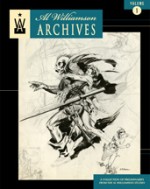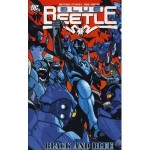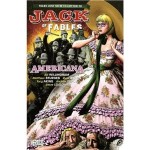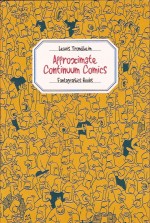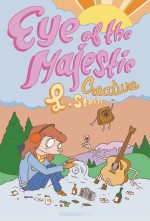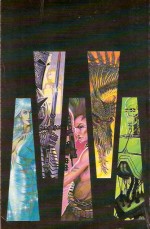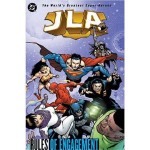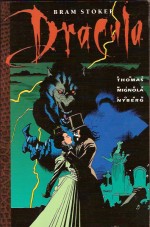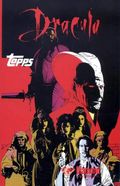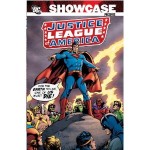
By Mike Friedrich, Len Wein, Dick Dillin & various (DC Comics)
ISBN: 978-0-85768-195-9
After the actual invention of the comicbook superhero – for which read the Action Comics debut of Superman in 1938 – the most significant event in the industry’s progress was the combination of individual sales-points into a group. Thus what seems blindingly obvious to us with the benefit of four-colour hindsight was proven: a number of popular characters could multiply readership by combining forces. Plus, of course, a mob of superheroes is just so much cooler than one (…or one-and-a-half if there’s a sidekick involved…).
And so the Justice Society of America is rightly revered as a true landmark in the development of comicbooks and when Julius Schwartz revived the superhero genre in the late 1950s, the key moment came with the inevitable banding together of the reconfigured mystery men.
That moment came with issue #28 of The Brave and the Bold, a classical adventure title that had recently transformed into a try-out magazine like Showcase. Just before Christmas 1959 the ads began running. “Just Imagine! The mightiest heroes of our time… have banded together as the Justice League of America to stamp out the forces of evil wherever and whenever they appear!â€
The rest was history: the JLA captivated the youth of a nation, reinvigorated an industry and even inspired a small family-concern into creating the Fantastic Four, thereby transforming the art-form itself
Following a spectacular rise, TV spin-offs brought international awareness which led to catastrophic overexposure: by 1968 the superhero boom looked to be dying just as its predecessor had at the end of the 1940s. Sales were down generally in the industry and costs were beginning to spiral. More importantly “free†entertainment, in the form of television, was by now ensconced in even the poorest household. If you were a kid in the sixties, think just how many brilliant cartoon shows were created in that decade, when artists like Alex Toth and Doug Wildey worked in West Coast animation studios.
Moreover, comicbook heroes were now appearing on the small screen. Superman, Aquaman, Batman, the Marvel heroes and even the JLA were there every Saturday in your own living room even after the global bubble had burst…
It was a time of great political and social upheaval. Change was everywhere and unrest even reached the corridors of DC. When a number of creators agitated for increased work-benefits the request was not looked upon kindly. Many left the company – not always voluntarily – for other outfits. Some quit the business altogether.
This fifth monochrome volume compellingly reflects the signs of the times as new writers fostered a “new wave†before slowly and safely returning the World’s Greatest Superheroes to the tried and tested Fights ‘n’ Tights arena…
Collecting issues #84-106 (and re-presenting the stirring covers of #85 and 93: giant editions which reprinted issues #10-11and #13 and18, respectively), this tome covers the period when the market changed forever, and comics stopped being a casual, disposable mass-entertainment.
By the end of this volume the publishers had begun the conceptual and commercial transition from a mass-market medium which slavishly followed trends and fashions to become a niche industry producing only what its dedicated fans wanted…
The dramas begin here with Justice League of America #84 (November 1970) and a guest-script from veteran writer Robert Kanigher illustrated by Dick Dillin & Joe Giella. ‘The Devil in Paradise!’ wherein a well-meaning but demented scientist builds his own Eden to escape the world’s increasing savagery before attempting to cleanse the Earth and start civilisation afresh.
With superheroes on the outs the team was severely truncated too. Issue #86 tackled impending global starvation as Mike Friedrich began a run of excellent eco-thrillers with ‘Earth’s Final Hour!’ as businessman Theo Zappa traded away the planet’s plankton (base of our entire food-chain) to a race of aliens with only Superman, Batman, Flash, Aquaman, Atom and Hawkman on hand to thwart him, whilst #87’s ‘Batman… King of the World!’ brought in occasional guest-star Zatanna and the semi-retired Green Lantern to tackle a deadly alien robot raider: a devious and cleverly veiled attack on Big Business and the Vietnam war, most famous these days for introducing a group of alien superheroes mischievously based on Marvels Mighty Avengers…
The human spirit and enduring humanity were highlighted when ancient refugees from the lost city of Mu returned to find us in charge of the planet they had abandoned millennia ago. ‘The Last Survivors of Earth!’ showed that even when superheroes were outmatched by scientifically-instigated global catastrophes, the simple patience, charity and self-confidence of ordinary folks can move mountains and save worlds.
‘The Most Dangerous Dreams of All!’ is one of the oddest tales in JLA history with a thinly disguised Harlan Ellison psychically inserting himself into the consciousness of Superman and Batman to woo the Black Canary with near-fatal repercussions, in a self-indulgent but intriguing examination of the creative process whilst #90’s ‘Plague of the Pale People!’ saw Aquaman’s submerged kingdom of Atlantis conquered by a primitive sub-sea tribe (the Saremites from Flash #109 – for which story check out Showcase Presents the Flash volume 1) using nerve gas negligently dumped in the ocean by the US military.
In a mordant and powerful parable about lost faith and taking responsibility the JLA were forced to deal with problems much tougher than repelling invaders and locking up bad-guys…
Justice League of America #91 (August 1971) began the hero-heavy first part of the annual JLA/JSA team-up with ‘Earth… the Monster-Maker!’ as the Supermen, Flashes, Green Lanterns, Hawkmen, Atoms and Robins of two separate Realities simultaneously and ineffectually battled an alien boy and his symbiotically-linked dog on two planets a universe apart, until ‘Solomon Grundy… the One and Only!’ gave them a life saving lesson on togetherness and lateral thinking…
Following the cover of reprint giant #93, Neal Adams stepped in to provide additional pencils for the tense mystery ‘Where Strikes Demonfang?’ as ghostly guardian Deadman helped Batman, Aquaman and Green Arrow foil a murder mission by the previously infallible Merlyn and the League of Assassins. The issue ended on a cliffhanger as Flash, Green Lantern and Hawkman were lost in a teleporter accident leaving Batman, Black Canary, Green Arrow and the Atom to fight ‘The Private War of Johnny Dune!’ wherein a disaffected black Vietnam veteran discovered the power and temptation of superpowers. Tragically even the ability to control minds wasn’t enough to change an unjust society two hundred years in the making…
The JLA returned to large-scale cosmic drama with issue #96 as Superman located the lost Leaguers on the distant yet familiar world of Rann (at least if you’ve read Showcase Presents Adam Strange volume 1) battling a planet-killing energy vampire in ‘The Coming of… Starbreaker!’
Their hard-won triumph only brought Earth to the attention of the extinction-event-level villain, leading to #97’s ‘The Day the Earth Screams!’ – a 37-page epic incorporating and recapitulating the team’s origin from #9 – resulting in a positively charged team, aided by Golden Age magician Sargon the Sorcerer, finally crushing the Stellar Leech in the climactic ‘No More Tomorrows!’
Environment-in-extremis was once more the theme in #99’s ‘Seeds of Destruction!’ as two alien Johnny Appleseeds began reseeding Earth with plants irrespective of whether or not humans want – or can survive – their monstrous crop…
Justice League of America #100 (August 1972) heralded the move away from relevancy and hot button social topics and a return to full-on Costumed melodramas beginning with a colossal three way team-up featuring almost every hero in the then-DC pantheon.
Beginning as part of the annual JLA/JSA summer blockbuster ‘The Unknown Soldier of Victory!’ featured the debut of Len Wein as scripter as the assembled champions of two Earths began a monumental hunt through time to retrieve forgotten heroes the Seven Soldiers of Victory; not simply out of common decency but because the vanished vigilantes held the answer to defeating a criminal mastermind literally holding the world of Earth-2 to ransom.
The quest continued in ‘The Hand that Shook the World!’ before ending in one adventurer’s gallant final sacrifice in #102’s ‘And One of Us Must Die!’ (with additional inking from Dick Giordano).
Returned to their own planet the JLA teamed up with and then inducted one of the few mystery men who hadn’t accompanied them to Earth-2 in ‘A Stranger Walks Among Us!’ (Wein, Dillin & Giordano) as the cross-genre horror-hero Phantom Stranger foiled a plot to sorcerously slaughter six Leaguers during the annual Halloween carnival in Rutland, Vermont, after which Green Lantern’s arch-enemy Hector Hammond orchestrated an attack on his old foe by setting an unstoppable monster loose on the League in ‘The Shaggy Man Will Get You if You Don’t Watch Out!’
The “More-the-Merrier†recruitment drive continued in #105 as the Elongated Man signed up to save the day against marauding, malignant putty-men in ‘Specter in the Shadows!’, anonymously aided by a miraculously resurrected robotic Red Tornado who joined up in #106, unaware that he had been reprogrammed into becoming a ‘Wolf in the Fold!’ which neatly concludes this delightful fifth volume of extraordinary exploits.
The Justice League of America has become a keystone of American comics and these tales are still among the most thought-provoking, controversial and purely entertaining episodes in their half-century history.
Just Imagine…
© 1968-1972, 2011 DC Comics. All Rights Reserved.
